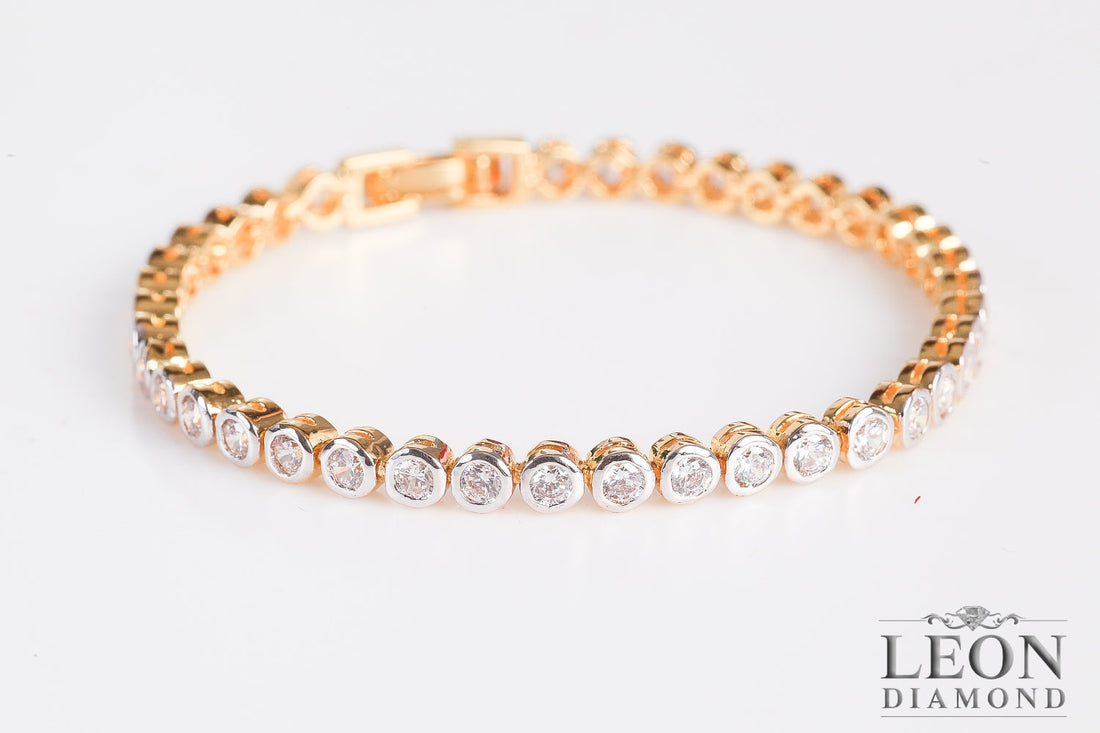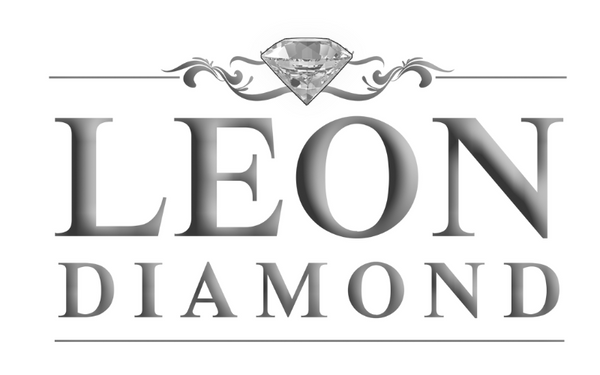
What Is the Best Metal for a Tennis Bracelet? The Ultimate 2025 Guide
Share
A tennis bracelet is a timeless piece of jewelry made with a continuous line of diamonds or gemstones set in a flexible metal chain. The style gained worldwide recognition in the 1980s when tennis champion Chris Evert wore one during a match, and it quickly became a symbol of elegance and versatility.
The choice of metal plays a decisive role in the bracelet's durability, appearance, maintenance needs, and comfort. The article in Forbes Magazine advises that selecting a metal suited to your lifestyle and skin tone ensures the piece will remain a treasured part of your collection for years.
This guide examines gold, platinum, and silver, comparing their durability, hypoallergenic qualities, cost, and aesthetic appeal to help you choose the metal that best matches your needs and style.
Why Metal Choice Matters
The metal you choose for your tennis bracelet affects its durability, appearance, and care requirements. It also influences how the bracelet feels on your wrist and how well it matches your skin tone and wardrobe. Key factors to consider include:
- Durability: The ability of the metal to withstand daily wear.
- Hypoallergenic Properties: Important for sensitive skin.
- Budget: Metals vary in price.
- Aesthetic Appeal: The look and color of the metal.
- Maintenance: What level of care does the metal require
- Resale Value: Some metals hold value better than others.
- Weight and Comfort: Heavier metals feel more substantial, while lighter metals are easier to wear.
Gold Tennis Bracelets
Gold is a classic and versatile choice for tennis bracelets. It comes in three primary colors: yellow, white, and rose.
Yellow Gold
Yellow gold offers a warm, traditional look that remains timeless. It pairs beautifully with warm skin tones and is popular for those who appreciate classic jewelry. Yellow gold is durable and resistant to tarnish, but it may require occasional polishing to maintain its shine.
White Gold
White gold provides a modern, bright appearance that enhances the brilliance of diamonds. Jewelers often rhodium-plate white gold to give it a reflective finish. This metal suits cool skin tones and is a favorite for those who want a contemporary look. Over time, white gold may require replating to keep its bright finish.
Rose Gold
Rose gold features a soft pink hue that is both romantic and trendy. It flatters a wide range of skin tones and offers a unique, feminine look. Rose gold is slightly less durable than yellow or white gold and may show wear more quickly, but its distinctive color makes it a standout choice.
Gold Purity and Alloys
Gold used in jewelry is typically alloyed with other metals to improve strength. The most common purities are 14K and 18 K gold. Fourteen-karat gold contains 58.3% pure gold, while 18-karat gold contains 75%. Higher karat gold is softer and richer in color, but 14K gold is more durable for daily wear.
Pros and Cons of Gold
Pros:
- Wide range of color options
- High resale value
- Classic and timeless appeal
- Suitable for most skin types
Cons:
- Requires occasional polishing
- White gold may need replating
- Rose gold vs yellow gold, which one is less durable
Platinum Tennis Bracelets

Platinum is known for its strength, natural white color, and hypoallergenic properties. It is denser and more durable than gold, making it an ideal choice for everyday wear.
Platinum's Unique Qualities
Platinum resists scratches and securely holds diamonds. Its natural luster does not fade, and it does not require plating. Platinum is hypoallergenic, making it a safe choice for sensitive skin. Its weight gives it a luxurious feel, and its rarity adds to its prestige.
Pros and Cons of Platinum
Pros:
- Superior durability
- Hypoallergenic
- Low maintenance
- High resale value
- Luxurious weight and feel
Cons:
- Higher cost
- Heavier than gold or silver
Silver Tennis Bracelets
Silver, usually in the form of sterling silver, is the most affordable metal for tennis bracelets. It is lightweight and has a bright, versatile appearance.
Sterling Silver in Jewelry
Sterling silver contains 92.5% pure silver, alloyed with other metals to enhance its strength. It is popular for its affordability and bright finish. Silver works well for casual or everyday wear, but it is less durable than gold or platinum.
Maintenance and Care
Silver is prone to tarnishing, especially when exposed to air, moisture, or chemicals. Regular cleaning of diamond jewelry and proper storage are crucial to maintaining the appearance of silver jewelry. Anti-tarnish strips and soft pouches help prevent discoloration.
Pros and Cons of Silver
Pros:
- Most affordable option
- Lightweight and comfortable
- Versatile style for casual wear
Cons:
- Prone to tarnishing
- Less durable than gold or platinum
- Lower resale value
Comparing Gold, Platinum, and Silver
|
Factor |
Gold (Yellow/White/Rose) |
Platinum |
Silver |
|
Durability |
High (varies by type) |
Highest |
Low to Medium |
|
Hypoallergenic |
Yes (esp. white gold) |
Yes |
Yes (but tarnishes) |
|
Cost |
Moderate to High |
High |
Low |
|
Maintenance |
Moderate |
Low |
High |
|
Aesthetic Appeal |
Classic, modern, romantic |
Luxurious, modern |
Casual, versatile |
|
Resale Value |
High |
Very High |
Low |
|
Skin Tone Suitability |
Warm, cool, universal |
Universal |
Universal |
|
Weight |
Moderate |
Heavy |
Light |
How to Choose the Right Metal
- Set Your Budget: Silver is the most affordable, gold is mid-range, and platinum is the most luxurious. Consider how much you want to invest and whether you value long-term resale potential.
- Consider Your Lifestyle: If you plan to wear your tennis bracelet daily, opt for platinum or gold for its exceptional durability. Silver is best for occasional wear or as a starter piece.
- Match Your Skin Tone: Yellow gold flatters warm skin tones, white gold and platinum suit cool tones, and rose gold is universally flattering. Try on different metals to see which complements your complexion.
- Consider Style: Gold offers a classic look, platinum is modern and luxurious, while silver is casual and versatile. Consider your wardrobe and how you plan to wear the bracelet.
- Check for Allergies: Platinum and white gold are generally considered the best options for sensitive skin. If you have a known allergy to certain metals, consult with a jeweler before making your choice.
- Consider Weight and Comfort: Platinum feels heavier and more substantial, while silver is light and easy to wear. Choose a metal that feels comfortable on your wrist.
- Evaluate Maintenance Needs: If you prefer low-maintenance diamond jewelry, platinum is the best choice. Gold requires occasional polishing, and silver needs regular cleaning to prevent tarnish.
What Are Care and Maintenance Tips

- General Care: Store your diamond bracelet in a soft pouch or lined box. Clean with mild soap and water, using a soft brush for diamonds.
- Gold: Polish occasionally and avoid harsh chemicals.
- Platinum: Needs only occasional cleaning with a soft cloth.
- Silver: Clean frequently to prevent tarnish and use anti-tarnish strips in storage.
Regular professional checkups help keep your bracelet secure and looking its best.
Tennis Bracelet Trends for 2025
- Lab-Grown Diamonds: Increasingly, buyers are opting for lab-grown diamonds due to their ethical sourcing and affordability.
- Stacking Styles: Wearing multiple tennis bracelets in different metals is a growing trend.
- Minimalist Designs: Sleek, simple settings are popular for a modern look.
- Personalization: Custom engravings and mixed metals are in demand.
Find Your Sparkle, Your Way
Gold, platinum, and silver each offer distinct benefits for tennis bracelets. Gold is versatile and timeless, platinum is durable and luxurious, and silver is affordable and stylish. The best metal for your tennis bracelet depends on your budget, lifestyle, skin tone, and style preferences. With proper care, any of these metals can provide lasting beauty and value.
Visit Leon Diamonds to explore tennis bracelets in gold, platinum, and silver. Experts are ready to help you find or create the perfect piece that matches your needs and celebrates your style.
Frequently Asked Questions
What metals are commonly used for tennis bracelets?
The most common metals for tennis bracelets are gold (yellow, white, and rose), platinum, and sterling silver, each offering different durability, appearance, and maintenance needs.
Which metal is the most durable for daily wear?
Platinum is the most durable and scratch-resistant metal, ideal for everyday wear. It holds diamonds securely and requires minimal maintenance compared to gold and silver.
Are some metals better for sensitive skin?
Yes, platinum and white gold are hypoallergenic and suitable for sensitive skin, while silver can tarnish and may cause reactions for some wearers.
How do costs compare among gold, platinum, and silver tennis bracelets?
Silver is the most affordable, gold has a moderate price range depending on karats and color, and platinum is the most expensive due to its rarity and durability.
What maintenance does each metal require?
Platinum requires low maintenance with occasional cleaning; gold needs polishing, and white gold may need replating; silver requires frequent cleaning to prevent tarnishing.
How do I choose the best metal for my tennis bracelet?
Consider your budget, lifestyle (frequency of wear), skin tone, style preferences, and maintenance willingness. Platinum suits a luxurious, low-maintenance preference; gold offers classic versatility; silver is excellent for affordable, casual wear.
